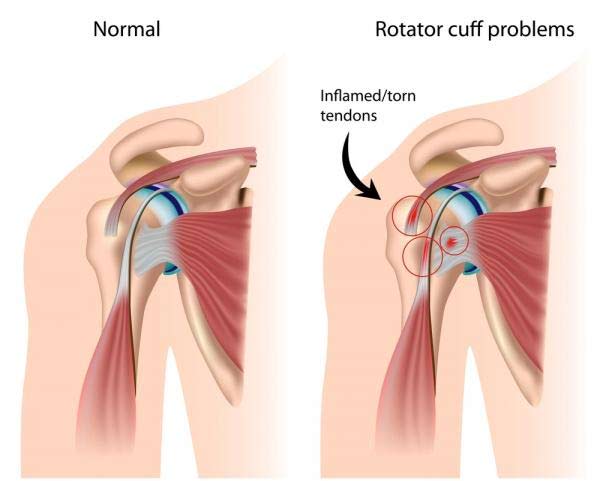Most people don’t realize how much they rely on their shoulders until one of them starts to hurt. Suddenly, routine tasks become difficult. From combing one’s hair to walking the dog to pulling on a shirt . . . a sore shoulder makes its presence felt.
 Diagnosing the Problem is Step #1
Diagnosing the Problem is Step #1
There are a number of possible causes for persistent shoulder pain– from injury or chronic stress to a ligament, cartilage, meniscus, bursa or tendon in this very mobile joint. The first thing on the agenda is figuring out what is causing the pain.
The shoulder is actually composed of three bones with their tendons and ligaments. The head of the upper arm bone fits into a socket to allow a wide range of motion.
Most shoulder problems stem from one of the following:
- instability, when the bone is forced out of the socket by impact or strain;
- arthritis, which is a gradual wearing away of the cartilage that cushions the bone;
- bursitis or tendonitis, an inflamed or torn tendon; or fracture.
Arthritis
Is the most common reason for shoulder pain. Pain in the shoulder area, as well as stiffness and swelling, can come on gradually after middle age or occur suddenly after a sports-related injury. Patients with osteoarthritis may try to restrict their shoulder movement. Osteoarthritis is linked with torn rotator cuff and inflammation or infection of the lining of the joint.
Instability

Happens when the head of the upper arm bone is jerked out of the socket, and either partially or fully dislocated. This can occur repeatedly because the dislocation weakens the surrounding support system of ligaments, muscles, and tendons.
Bursitis and tendonitis can be caused by repetitive motion. Bursitis is an irritation of the bursa, which is a sac filled with fluid that cushions tendons, muscles, and bones. Tendonitis can take the form of a rotator cuff injury, which means that the tendons that support the joint become inflamed or irritated.
Tests For a Proper Shoulder Injury Treatment
After Dr. Jesse Shaw examines you and asks about your medical history, he may order imaging tests.
- X-rays are helpful in revealing damage from arthritis and changes in the bone structure.
- CT (computed tomography) is another imaging technique that gives a detailed picture of the bones.
- Or the doctor may request an EMG, which would help him diagnose nerve damage.
- Or Dr. Shaw may order an MRI. This test shows soft tissue damage and might help explain a sport or work-related injury that does not seem to involve degenerative arthritis, a torn rotator cuff, or bursitis.
Treatment is based on a diagnosis. Some conditions respond well to physical therapy and a change of routine (skipping tennis, for instance, until the injury heals). Anti-inflammatory medication can be helpful. If the shoulder does not respond to conservative therapy, Dr. Jesse may want to discuss surgical options.











